

Become a supporter
During our cycling the Loire Valley in France, we were looking forward to miles of smooth asphalt bike paths, but instead, we ended up navigating gravel paths alongside the Loire River. We had imagined enchanting vistas, yet we discovered more classic riverside views, unexpectedly enhanced by the presence of stunning castles and palaces. It was the sheer quantity, beauty, and variety of these historic structures that overshadowed our initial perceptions of the area. After all, the essence of the Loire Valley lies in France's rich history, its remarkable culture, art, and architecture, lending the region a touristic allure that places the Loire among the most captivating rivers to explore in Europe.
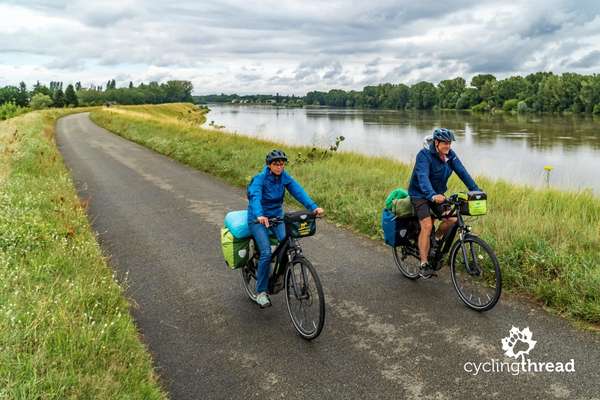
During our visit to France, we embarked on a bike journey through a portion of the Loire's central path, recognized as a UNESCO World Heritage Site in 2000. This esteemed and valuable stretch of the Loire Valley runs from Sully-sur-Loire near Orleans to Chalonnes-sur-Loire near Angers. To navigate this roughly 280-kilometer segment of the river, we traversed about 380 kilometers on the Loire à vélo, or "Loire by bike", trail. Starting from Sully-sur-Loire, our route took us through Orleans, Chambord, Blois, Amboise, Tours, Chinon, Saumur, and finally to Angers. On our journey back, we were aided by a special train designed for cyclists, a detail I'll delve into more at the article's conclusion.
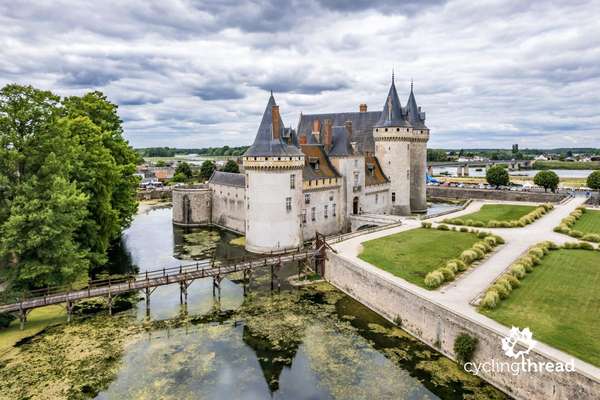
We selected the charming town of Sully-sur-Loire as the ideal launching point for our cycling adventure in the Loire Valley. The town's crown jewel is the modest yet stunning Château de Sully, a prime example of military-residential architecture from the 13th century. This moated castle captivates visitors with its historical depth and aesthetic appeal. Additionally, the town is home to a historic bridge spanning the Loire River, which links the town's two halves and enhances the scenic beauty of the area. Exploring the quaint streets lined with stone buildings and narrow alleys near the castle was an enchanting experience. Our evening walk through the historic heart of Sully-sur-Loire served as a delightful and symbolic beginning to our multi-day journey into the heart of the ancient Loire Valley.
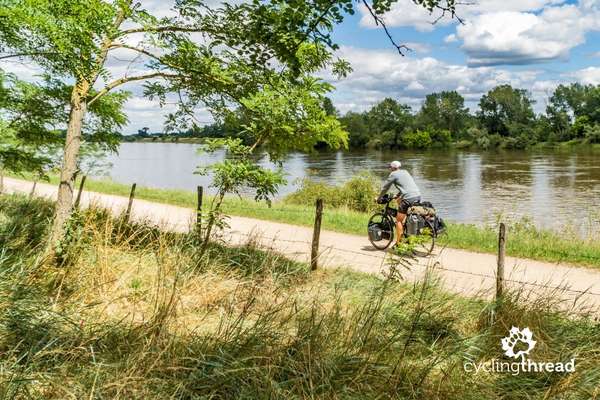
In the heart of Orleans, we were welcomed by the sight of large Ukrainian flags in yellow and blue, waving along Joan of Arc Avenue. It was here that I captured one of my favorite photographs of the journey, just as the sun broke through the clouds after a rainfall, illuminating the grand Sainte-Croix Cathedral of Orleans that marks the eastern end of the city's most renowned street. Standing at 88 meters tall, the cathedral's spires rank it among the top five tallest in France. The cathedral is tied to the tale of a victorious mass in 1429, attended by Joan of Arc following the lifting of the English siege on Orleans. However, the fact that the current structure's erection began in 1601 hints that the famous story actually relates to an earlier Romanesque church that once stood in its stead. The Sainte-Croix Cathedral we see today was only inaugurated in 1829, exactly four centuries after the Siege of Orleans. A notable point is that since World War II, neither of the cathedral's two towers has undergone renovation, rendering them off-limits to the public.
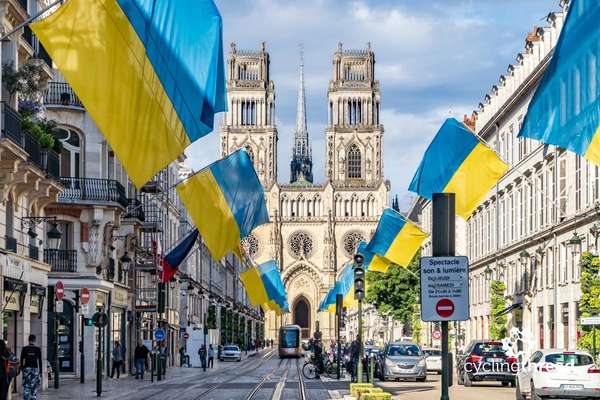
Upon our arrival that day, we settled into the welcoming Chaptal Hotel in Amboise for the night, which swiftly became recognized as one of the most bicycle-friendly accommodations we've encountered on our cycling tours across Europe. This distinction was largely due to its superbly organized bike room—a facility that not only offered secure bicycle storage but also included a workshop for bikes, a charging station for electric bikes, and even a dressing area alongside a rack for drying wet clothing. Furthermore, the bike room could be directly accessed from the street via its own entrance and a purpose-built ramp, enhancing convenience for cyclists. Emblematic of its dedication to cyclists, the hotel is a member of the Accueil Vélo network, a commitment prominently displayed by a plaque situated just below the state-issued hotel star rating sign.
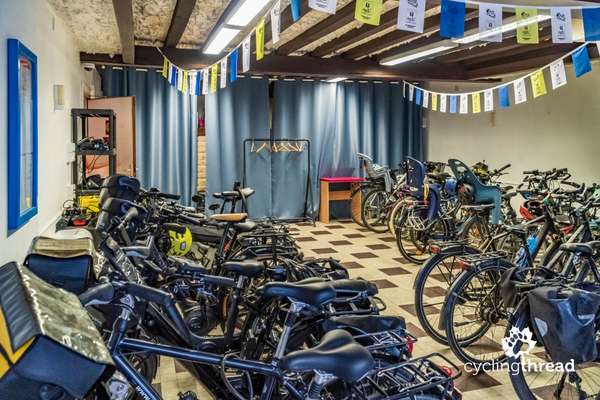
Even if just for the breathtaking views it offers of the city and river, Amboise Castle is a must-see destination. The opportunity to stroll through its meticulously kept, quaint garden adds to its allure. Our recollections of Amboise are further enriched by the quaint market we stumbled upon within the castle's courtyard. This market showcased local purveyors of jams, liqueurs, wines, and confections. Additionally, we had the unique experience of being interviewed by a French television crew, who were there capturing a segment on the revival of tourism following the hiatus caused by the pandemic. Not to forget, our leisurely evening walk the day before, meandering through the town's narrow lanes and along the riverfront promenade as the sun dipped below the horizon, was truly memorable. In essence, Amboise possesses all the qualities to be fondly remembered as one of the most notable towns and villages dotting the Loire Valley.
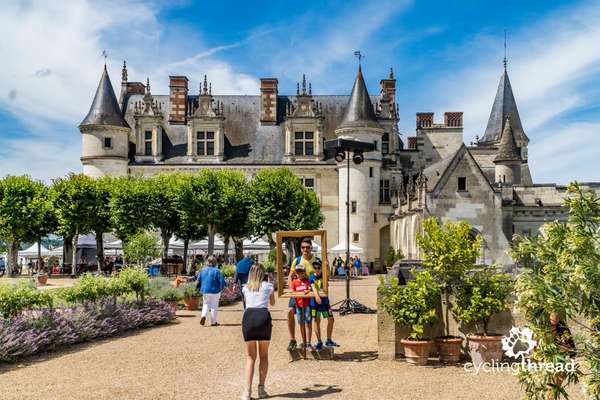
During a lovely dinner at the Au Local restaurant in Chinon, nestled right beside the castle tower, we were accompanied by one of the Loire's wines. The ambiance was perfect with the setting sun, the day's cycling efforts behind us, and the quiet chatter from neighboring tables on the terrace, occasionally punctuated by contented murmurs prompted by the exquisite flavors. The official route's website highlights local Loire delicacies, including the traditional Nantes almond cake flavored with rum, fouée (a type of pork ball served with a pâté-like filling), Tours' nougat cake, goat cheeses from the Loire Valley, the inverted apple tart known as tarte tatin, and the renowned mustards of Orleans, among others. France truly is a haven for food lovers, a fact that deserves a spot in any travel itinerary to the Loire Valley, where one might consider trading in some cycling miles for culinary delights.

The culmination of our journey's cyclist-friendly experiences occurred as we prepared to return to our car in Orleans by train. A young woman, adorned in the SNCF (French National Railway Company) uniform, emerged from a train we had randomly approached. She kindly asked us to detach our bicycles and panniers, then personally guided our bikes to the dedicated compartment on the lower level of a regional double-decker train. After inquiring about our final stop, she skillfully arranged our bicycles in the special racks, ensuring they were in the correct sequence for our destination. We then proceeded to the upper deck, which was reserved for cyclists, to take our seats. Upon reaching Orleans, we collected our bicycles. It was only when disembarking that I noticed the La Loire à Vélo inscription on the train, prompting me to seek out further details about this thoughtful service later.
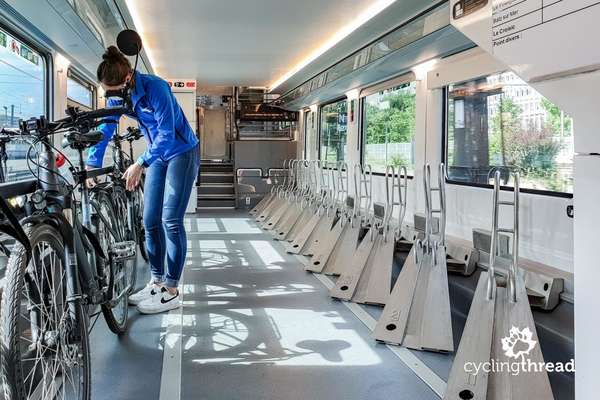
Our adventure in the Loire Valley was anything but disappointing. While the landscapes of the Loire might have seemed ordinary at first glance, they were completely outshined by the magnificent interiors of the palaces and castles we explored, as well as the exquisite culinary creations served by the region's restaurateurs. Rather than focusing solely on the quality of the cycling paths, I found myself continually impressed by the comprehensive amenities offered along the Loire à vélo cycle route. This included access to the French network of cyclist-friendly accommodations, clear signage along the route, and the exceptional train service catering specifically to cyclists. Our week-long exploration of the Loire Valley unfolded as a collection of delightful, unexpected discoveries in both travel and cycle-touring, elevating it to one of the top positions on our list of Europe's best cycling routes.
Check out my other articles on cycle.travel:
- Ciclovia Alpe-Adria - Austria & Italy
- Rhine Cycle Route in Switzerland
It took us just a week to complete our bicycle trip along the Rhine in Switzerland, which stands out as the most breathtaking cycling path we've encountered in Europe to date. The Swiss path's greatest strength lies in its variety. As we followed the Rhine through Switzerland, we were mesmerized by the changing landscapes and picturesque cities, including Chur, Schaffhausen, Stein am Rhein, and Basel, the country's third-largest city. Embarking on a cycling journey along the Rhine is, without a doubt, an excellent idea for a biking vacation in Europe.
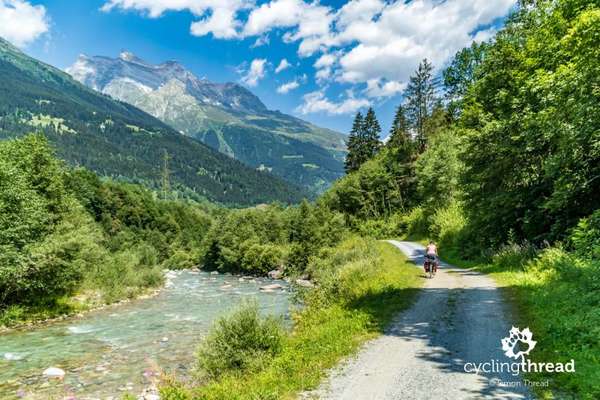
The Rhine Cycle Route in Switzerland marks the beginning of EuroVelo 15, an extensive European cycling trail that stretches for over 1200 kilometers to where the Rhine River flows into the North Sea. This journey starts at Andermatt, a charming resort nestled in the Swiss Alps, and continues towards the Oberalp Pass. From this point, close to the Rhine's source, the route follows the river's upper course, known as the Vorderrhein or Anterior Rhine, leading cyclists through the breathtaking Ruinaulta, often referred to as Switzerland's Grand Canyon. After leaving the city of Chur in the Graubünden region, the pathway enters a tranquil phase, winding through a wide valley until it reaches Lake Constance. The journey resumes along the bustling towns of Lake Constance's southern shore, through the scenic town of Stein am Rhein, and past Europe's largest waterfall, culminating in Basel. Despite the official distance being 430 kilometers, we found ourselves covering just shy of 480 kilometers.
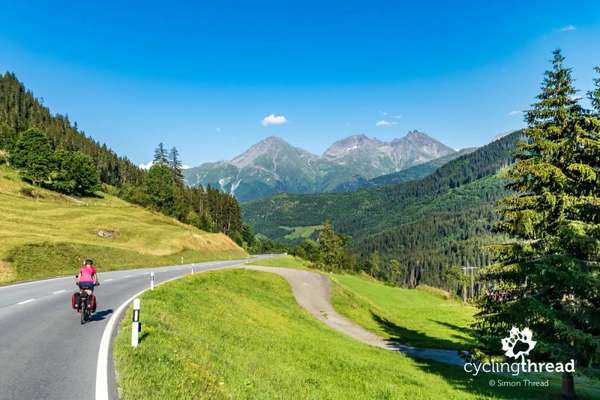
Andermatt greeted us with almost entirely clear, blue skies, while the surrounding Ursern Valley was drenched in sunshine. Historically, Andermatt served as a crucial junction for trade routes across the Alps, and today, it acts as a hub for a variety of tourist activities, including hiking, biking, driving, and even rail travel. The town retains a historical charm, with its main street, now restricted from tourist and through traffic, lined with ancient buildings. Noteworthy among these is the so-called Suworow House, which was once the residence of Russian General Alexander Suvorov during his campaign against France in the Second Coalition war of 1799. This historic building is currently home to the Ursern Valley Museum. A short distance away, one can find the quaint Drei Könige & Post hotel, which has been accommodating merchants crossing the Alps for centuries.
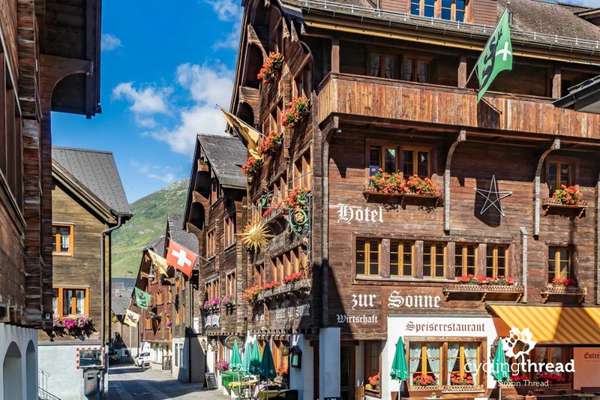
Navigating through a storm and taking time to marvel at the Grand Canyon, we reached Chur late in the evening, sadly missing out on experiencing the nightlife of Switzerland's oldest city. The following morning, we ventured to the serene square behind St. Martin's Church, located in front of the Rhaetian Museum. The museum offers traditional exhibits that tell the history of the Graubünden region, alongside intriguingly set-up displays in the basement of the ancient building, showcasing local archaeological treasures. Standing in the square outside the museum, one gets a sense of timeless tranquility. In one corner, a fountain quietly babbles, providing relief to tourists on warm days, who then continue on to the majestic Cathedral of the Assumption of the Blessed Virgin Mary, dominating the Old Town's skyline.
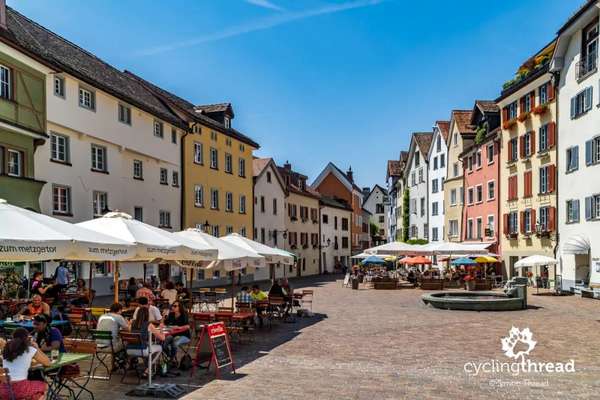
Shortly after rejoining the Rhine, we encountered one of the most breathtaking segments of our journey. Here, the cycling path hugs the river's edge, skirting the base of the Fläscherberg massif, crowned by the Regitzer Spitz peak. Fläscherberg is cherished by locals for outdoor activities and also doubles as a natural defense outpost for the Swiss army. This spot marks the northernmost boundary of the Graubünden canton, beyond which lies the diminutive principality of Liechtenstein. It presents perhaps the finest chance to capture a memorable photo with the Rhine as a backdrop.
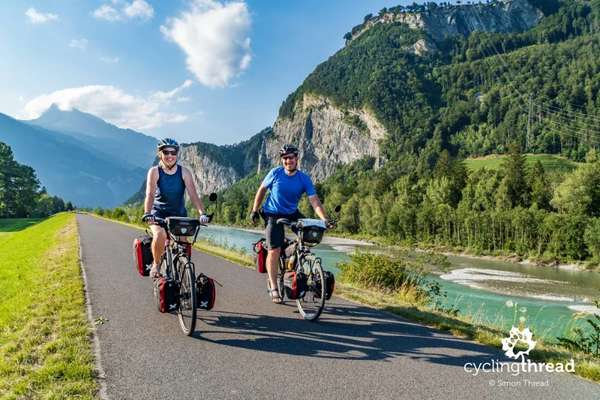
On the subsequent day, we arrived at a welcoming campsite in Buchs, a town we had previously passed through during our Alpine adventure. Much like our last visit, Buchs itself didn't leave a strong impression. Our journey had taken us through Chur, allowed us a lengthier stop in Bad Ragaz, a detour down to Sargans, and a quest to locate the Gonzen mine, leading us to the campsite just as the day was fading. The decision to explore the neighboring town of Werdenberg was thus deferred to the next day. With its castle bathed in the glow of spotlights, Werdenberg promised an ample share of picturesque views for our exploration.
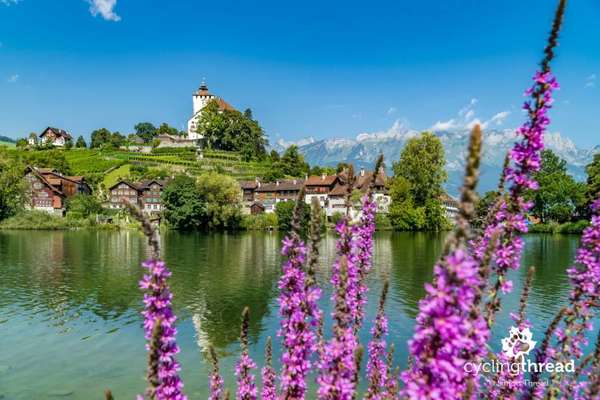
Upon departing Lake Constance, the Rhine progresses towards the North Sea, embracing the quintessential characteristics of a riverside landscape. It is within this setting that Stein am Rhein emerges as arguably the most enchanting town along the route. This town is home to numerous historical edifices recognized as part of Switzerland's national heritage, with a significant concentration around the uneven, inclined market square, dominated by the imposing structure of the town hall at its summit. The unique ambiance that must pervade this picturesque location during the height of the tourist season is something we could only envision.
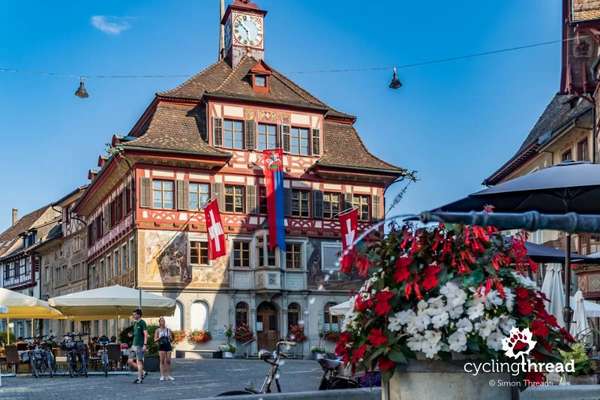
Schweiz Mobil stands out as an excellent resource for exploring Swiss bike paths, offering a comprehensive website and mobile application that details tourist trails across Switzerland. This includes options for both touring and mountain biking, as well as hiking, rollerblading, and kayaking. In planning our journey, I found great pleasure in navigating through the assortment of cycling paths on the map of Switzerland's bike trails. We have plans to tackle the Lakes Route and the Jura Route in future years. It's worth noting that the site's sidebar menu allows users to filter the map display by types of routes - national routes are denoted by a single digit, regional by two digits, and local by three. Additionally, the site provides recommendations for daily stage lengths and brief overviews of the attractions one can expect to encounter.
Discover more about the Rhine Cycle Route on our website.
And check out my other articles on cycle.travel:
- Ciclovia Alpe-Adria - Austria & Italy
- Loire by bike in France
The Alpe-Adria bike route is one of Europe's most beautiful and popular cycling paths. In Austria, it's known as the Alpe-Adria Radweg, and in Italy, it's called the Ciclovia Alpe-Adria. The route is famous for crossing the Alps, going from Austria's northern Alps to the Adriatic Sea in Italy. What makes the Alpe-Adria stand out among European bike trails is a special 60-kilometer section that was once a railway in the Alps but is now a bike path. This part has many kilometers of paths that follow the old railway, including tunnels now used only by bikes, as well as beautiful old bridges and train stations that have been brought back to life thanks to bike riders.
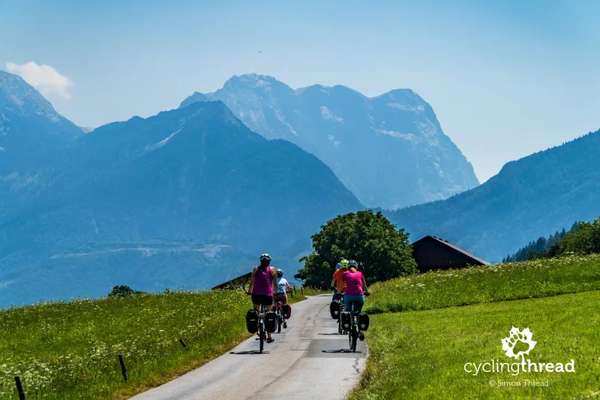
The Alpe-Adria bike route's appeal comes from its safe and comfortable riding conditions, with many parts far from car traffic. One section, considered among Europe's best bike paths, follows an old railway from Tarvisio to Udine. The route's varied landscapes add to its charm, starting from the East Alpine scenery, moving through picturesque Carinthia, and ending in the warm Mediterranean climate of the Adriatic. The journey's difficulty changes daily - it begins with two days of easy climbing, followed by a smooth descent into the Villach basin, then another climb, and ends with two days on a gently sloping path to the finish. Along the way, riders can enjoy diverse sights, taste the distinct cuisines of Austria and Italy, and benefit from a bike-friendly tourism setup, including places to stay. All these factors make it an ideal setting for a cycling vacation.
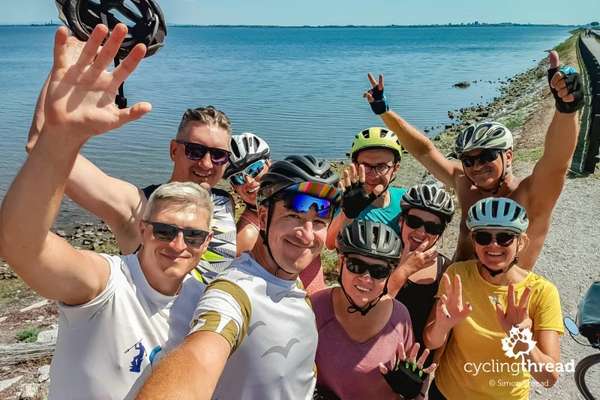
The beginning of the Alpe-Adria bike route is easier to ride than expected, thanks to its path along the Salzach and Gasteiner Ache valleys, which gently slope up towards the High Tauern mountains. In the first two days, cyclists cover around 120 kilometers with just two main climbs - one shortly after passing Schwarzach im Pongau and the other approaching and within Bad Gastein. The first climb has steep parts between 10-15%, and near the Church of Saints Primus and Felician in Bad Gastein, the slope exceeds 16%. However, these climbs are relatively short, about 2-3 kilometers, meaning that cyclists who aren't as experienced can easily walk these sections without losing much time.
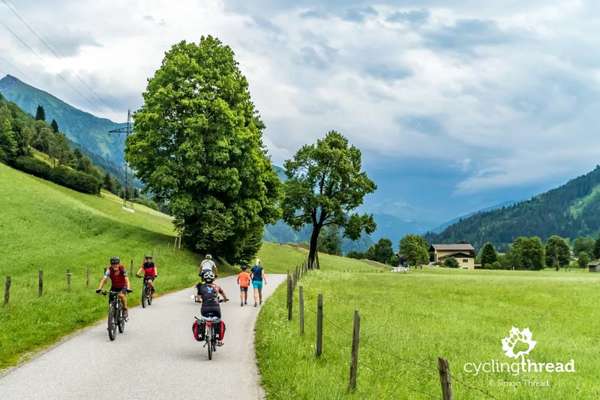
We got off the train that passed through a tunnel under the High Tauern mountains and found ourselves in Carinthia for the third year in a row. This beautiful part of Austria is a hub for cycling tourism, attracting riders from all over Europe. Our first trip here was the Great Carinthia Lake Loop, a journey connecting the biggest lakes in Carinthia, starting from Villach. The following year, we took on the Drava bicycle route, celebrated as one of Europe's top cycling paths, with its central and longest stretch cutting through Carinthia. This year, on the Alpe-Adria route, we explored new areas of bike-friendly Carinthia. We started with a ride along the Möll River valley, which flows from the well-known Grossglockner mountain group, and then covered several kilometers in the southern part of Carinthia, facing the initial ascents towards the Julian Alps.
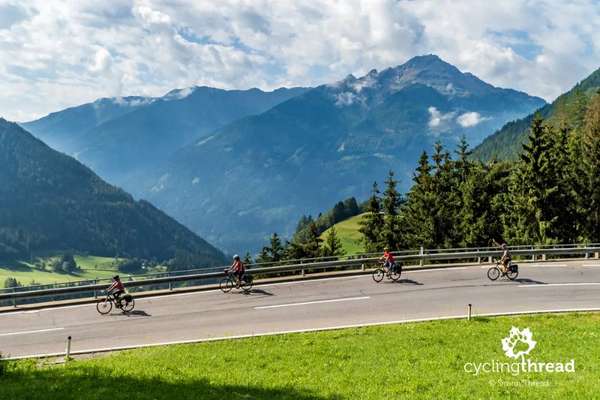
Before reaching Tarvisio, we joined a bike path that follows the route of the old Pontebbana Railway, named after the town of Pontebba, near the former Austro-Italian border. The railway was last used at the end of the 20th century, and between 1985 and 2000, a new, modern, double-track railway was constructed with parallel tunnels through the Alps. After the old railway was abandoned, the tracks were transformed into a bike path by removing the old ties and laying down smooth asphalt. This has attracted cyclists who appreciate the mild incline of no more than 2.2%, offering an easy ride away from road traffic, amidst stunning river and Alpine landscapes. This scenic path stretches for about 60 kilometers between Tarvisio and Gemona del Friuli.
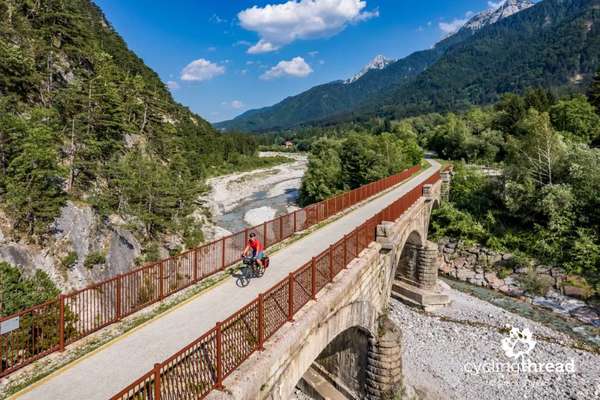
As you leave the charming town of Gemona del Friuli on the Alpe-Adria route, the Alpine scenery comes to an abrupt end, as if sliced away. The landscape flattens, offering a peaceful ambiance. After a few kilometers of gentle slopes, you'll find you need to put in more effort as you head towards the Adriatic Sea. The route passes through fields, meadows, and protected green areas. Noteworthy sights before reaching Udine include the stunning church in Vendoglio, within the larger area of Treppo Grande; the delightful town of Cassacco with its 13th-century palace, which is private and closed to the public; and the increasingly warm breezes that hint at the nearby Adriatic. The paths vary along this section, ranging from asphalt bike paths and local gravel roads to almost field paths and brief stretches on quiet public roads.
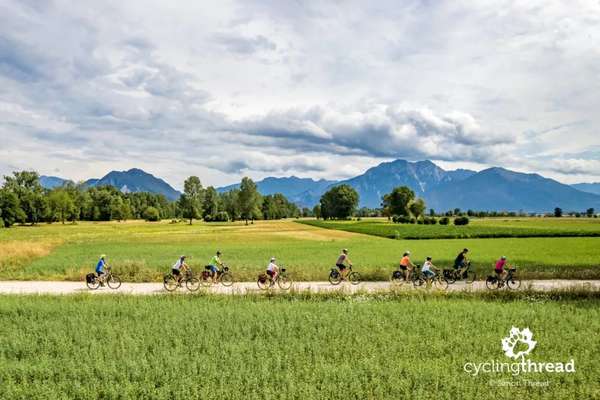
The Alpe-Adria bike route exemplifies the best of cycling tourism by transforming old, unused infrastructure into a vibrant cycling path, alongside providing a network of bike-friendly accommodations, eateries, and even special transport services for cyclists. Set against the backdrop of Europe's stunning landscapes, this route not only offers breathtaking views but also introduces riders to a rich mix of cultural, historical, and natural sights. These elements come together perfectly, creating picturesque cycling scenes like those at the old station in Chiusaforte. While it might be a stretch, the Alpe-Adria can be compared to the Velo Dunajec in Poland, which also leads the way in its region. Velo Dunajec too traverses diverse landscapes, follows river paths, boasts cycling bridges, and is developing its network of Bike-Friendly Places. Hopefully, it will be completed in its entirety and achieve the same level of popularity and emotional appeal as the Alpe-Adria.
Check out our entire report from the Alpe-Adria bicycle route in Austria and Italy.
And check out my other articles on cycle.travel:
Log in with your cycle.travel account:
| Password |
Or simply use your account on: